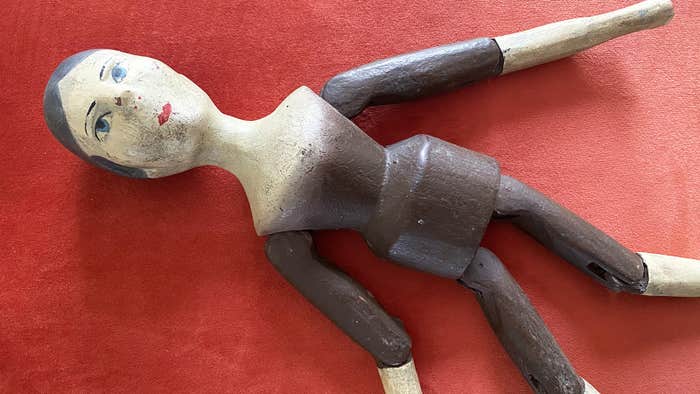With their daughter in the hospital suffering from kidney failure, Jonathan Bate and his wife Paula Byrne waited. “In that darkest moment, when she was struggling to survive, it was very hard to think of anything other than the prospect of losing her,” Bate says today. Bate and Byrne, both renowned literary scholars and biographers, found no relief. “We waited in the hospital and there was nothing to read but a tatty celebrity magazine,” Bate recalls. Following a kidney transplant, with their daughter doing well, Bate and Byrne had an idea. “What about putting together an anthology of poems to help people through dark times?” Bate says. “Perhaps a mindful reading of a poem can help restore the balance of the nervous system.”
In 2016, Bate, now the foundation professor of environmental humanities at Arizona State University, published an anthology with Byrne called Stressed, Unstressed: Classic Poems to Ease the Mind.1 The scholars knew that people in the English-speaking world had long turned to poetry to raise their spirits. The philosopher J.S. Mill found solace from depression in reading William Wordsworth. Mill called Wordsworth’s poetry “medicine for my state of mind.” The poems expressed “states of feeling … under the excitement of beauty” that gave Mill “a source of inward joy, of sympathetic and imaginative pleasure, which could be shared in by all human beings.”
Those of us who love literature have perhaps felt its capacity for healing. But what does the science say? Can reading poems relieve the physiological symptoms of stress and anxiety? That’s what videographer Steven Allardi and I set out to investigate in the videos below. They feature interviews with Bate and Inna Khazan, a biofeedback researcher and clinician at Harvard Medical School.
Biofeedback uses sensitive medical instruments to test how techniques such as deep breathing or mindfulness affect physiological indicators of stress such as blood pressure. Two of the most powerful indicators are impossible to measure without high-tech instruments: heart rate variability and cardio-respiratory synchronization. Within a given minute, your heart rate is not perfectly stable. In fact, it varies from beat to beat, moving from (say) 60 beats per minute to 80 beats per minute and then back down—all within a few seconds. It turns out high heart rate variability (HRV) in a resting state directly correlates with mental health,2 well-being,3 and even long-term resilience to stressors and trauma.4
Meanwhile, when you’re relaxed and enjoying high HRV, another strange phenomenon takes place in your body: Your heartbeats synchronize with your breath. This happens unconsciously and beyond your control. But it, too, correlates with mental well-being. And that’s where poetry comes in.
A series of studies have shown that reading rhythmic poetry can increase both your resting HRV5 and cardio-respiratory synchronization.6 It turns out this is especially true for poetry in long six-beat lines, such as the ancient Greek poetry that Plato described as sending its reciters into a trance-like or “rhapsodic” state. High HRV and cardio-respiratory synchronization can help induce that “flow state” in which mental focus becomes effortless and enjoyable. Perhaps those ancient Greek “rhapsodes” had found the trick to flow state in poetry.
We can’t all read ancient Greek poetry, though. So instead you might find a memorable and soothingly rhythmic poem to become your touchstone. For me, one of those poems is Robert Frost’s “Stopping by Woods on a Snowy Evening,” included in Stressed, Unstressed. Frost claims to have written the poem in a state of flow; could it induce a similar response in a reader?
To test these effects, Khazan hooked me up to a biofeedback machine that measures HRV and cardio-respiratory synchronization, among other indicators correlated with emotional regulation and resilience. I sat silently for two minutes and thought about painful, anxiety-inducing events in my life. My HRV tanked and my breath was all over the place. Then I read “Stopping by Woods” silently to myself. My indicators rallied and even surged above my baseline levels. The experience offered new insight into Frost’s remark from almost a century ago that poetry “begins in delight and ends in wisdom.” ![]()
Lead image: OneLineStock.com / Shutterstock
References
1. Bate, J. & Byrne, P. (Eds.) Stressed, Unstressed: Classic Poems to Ease the Mind William Collins, Glasgow, Scotland (2017).
2. van der Zwan, J.E., Huizink, A.C., Lehrer, P.M., Koot, H.M., & de Vente, W. the effect of heart rate variability biofeedback training on mental health of pregnant and non-pregnant women: A randomized control trial. International Journal of Environmental Research and Public Health 16, 1061 (2019).
3. Harvard Health Publishing Staff. Heart rate variability: How it might indicate well-bring. Harvard Health Blog (2021).
4. Dennis, P.A., et al. Posttraumatic stress, heart-rate variability, and the mediating role of behavioral health risks. Psychosomatic Medicine 76, 629-637 (2014).
5. von Bonin, D., Frühwirth, M., Heuser, P., & Moser, M. Effects of speech therapy with poetry on heart rate variability and well-being. Research in Complementary and Classical Nature Medicine 8, 144-160 (2001).
6. Cysarz, D., et al. Oscillations of heart rate and respiration synchronize during poetry recitation. American Journal of Physiology: Heart and Circulatory Physiology 287, H597-587 (2004).



























